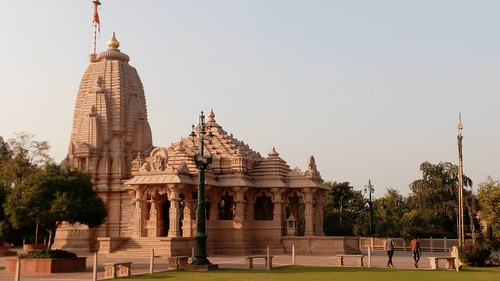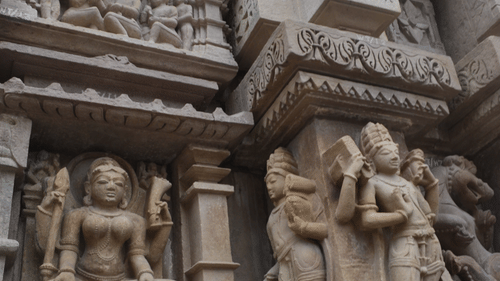Majestic Temples of Gwalior
Located in the heart of Madhya Pradesh, Gwalior teems with the rich history and culture the city has stood witness to from centuries ago. Gwalior is said to have majorly contributed to the branch of Indian music called Sangeet with legendary musicians like Tansen adorning the courts of the palace during his time. Moreover, Gwalior is also home to multiple architectural masterpieces. The most characteristic feature of this city is the fort that stands mighty on top of a hill, overlooking the city like a guardian! It is often referred to as the pearl of all forts in the country, given how many other fortified structures it has inspired. Besides this fort, several other historically significant monuments like palaces and temples dot the entire terrain of the city. The temples in Gwalior are of special importance. They serve as pilgrim destinations and are also testimony to the multi-layered traditions followed throughout the city.

Achaleswar Mandir
Believed to have been constructed in the 9th-century AD by the Paramara dynasty, Achaleswar Mandir, Gwalior, is situated within the compounds of Achalgarh Fort. The term ‘Achaleswar’ is derived from two separate Sanskrit words - ‘achal’, which translates to immoveable, and ‘Ishwar’, referring to God. The word is a conjugation attributed to the great God or Lord Shiva. The temple is said to have been built around the toeprint of the Hindu deity. The mode of worship at this temple is the same as any other Shiva temple, where devotees worship the Shiva Linga. The temple has been built on blocks of marble as was revealed during a renovation period.

Chaturbhuj Temple
Dedicated to Rama, an avatar of Lord Vishnu, Chaturbhuj Temple, Gwalior, derives its name from two Sanskrit terms - ‘chatur’, meaning four, and ‘bhuja’ meaning arms. The name refers to the deity, Lord Ram, who is said to have four arms. The architectural design of the temple comprises a complex multi-storey structure made of elements of a temple, a fort and a palace. The external portion of the temple consists of intricate lotuses carved into the walls. The roof of the temple is also accessible from where you can enjoy some uplifting views.

Sas Bahu Temple
Sas Bahu temple, Gwalior, is an 11th-century twin temple that is an excellent example of what India’s architectural techniques once churned out. The tower and the sanctum sections of the temple have been destroyed but the remnant portions of the temple are worth a visit. Intricate damaged carvings on the wall give a fair idea of the magnificence this three storied structure once carried. Both the temples, Sas and Bahu, are dedicated to Lord Vishnu with the pillars of Sas temple, depicting scenes of Vaishnavism, Shaivism and Shaktism.

Sun Temple
Inspired by the Sun Temple in Konark, Sun Temple, Gwalior, is one of the most revered shrines in the city. It is also known for its architectural brilliance and is dedicated to the Sun God. It therefore, sees high foot traffic of both tourists and pilgrims. The temple is built out of red sandstone and white marble which provides a stark yet beautiful contrast thanks to the colours of the materials.